Materials:
- 1 * Breadboard
- 1 * LM7805 Voltage Regulator
- 1 * Buzzer
- 1 * Push-Button Switch
- 1 * Arcade Button
- 1 * 220 ohm Resistor
- 1 * 10K ohm Resistor
- 1 * 10K ohm Variable Resistor (Potentiometer)
- 1 * LED
- 1 * 100 nF (0.1uF) Capacitor
- 1 * 12 volt power supply
- 1 * Barrel Jack
- 1 * Multimeter
- Several Jumper Cables (Hook-up Wires)
Introduction:
I had to solder two wires to a button which to taught me the skills to obviously solder, but to also use the soldering machine correctly, as well as to cut wires, and how to efficiently use the resources I had to solder the wires to the button with the least amount of wasted materials. The button I soldered the wires to was the button we would use in our circuits, so it was in my best interest to make it as good as possible.
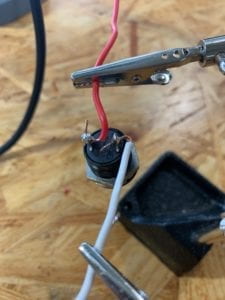
Circuit 1:
For the first circuit I had to create a workable doorbell using a speaker and the button I had made. I made it so that the power would activate the speaker only when I pressed the button.
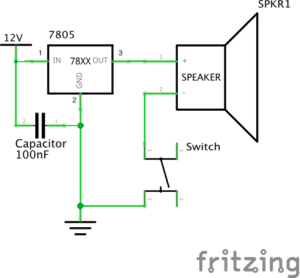
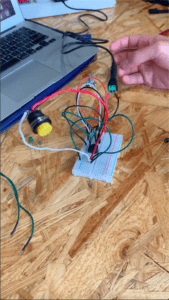
Circuit 2:
In the second circuit I made a lamp, which when pressed by the button would turn on. The “lamp” consisted of an LED bulb which if not put on the breadboard the correct way, would not work. This made me more aware of which end I would be plugging in the LED into the breadboard.
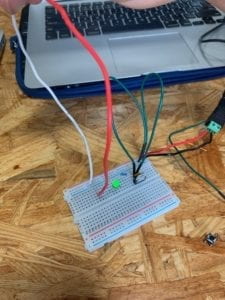
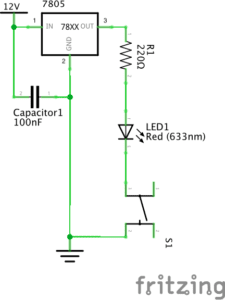
Question 1:
The way interactivity was observed in these circuits were mainly with the button. Even though the interactivity was extremely low, I press a button and a light turns on, it is still interactivity.
Question 2:
Interactivity can be very attractive to people in art, since it provides the user to be a part of the art instead of just a viewer. Once people feel more connected to the art the more they will enjoy it. From paintings that mirror your shape with tiles, to stairs that play music as you go up or down them, interactivity can be used in art in many different ways.